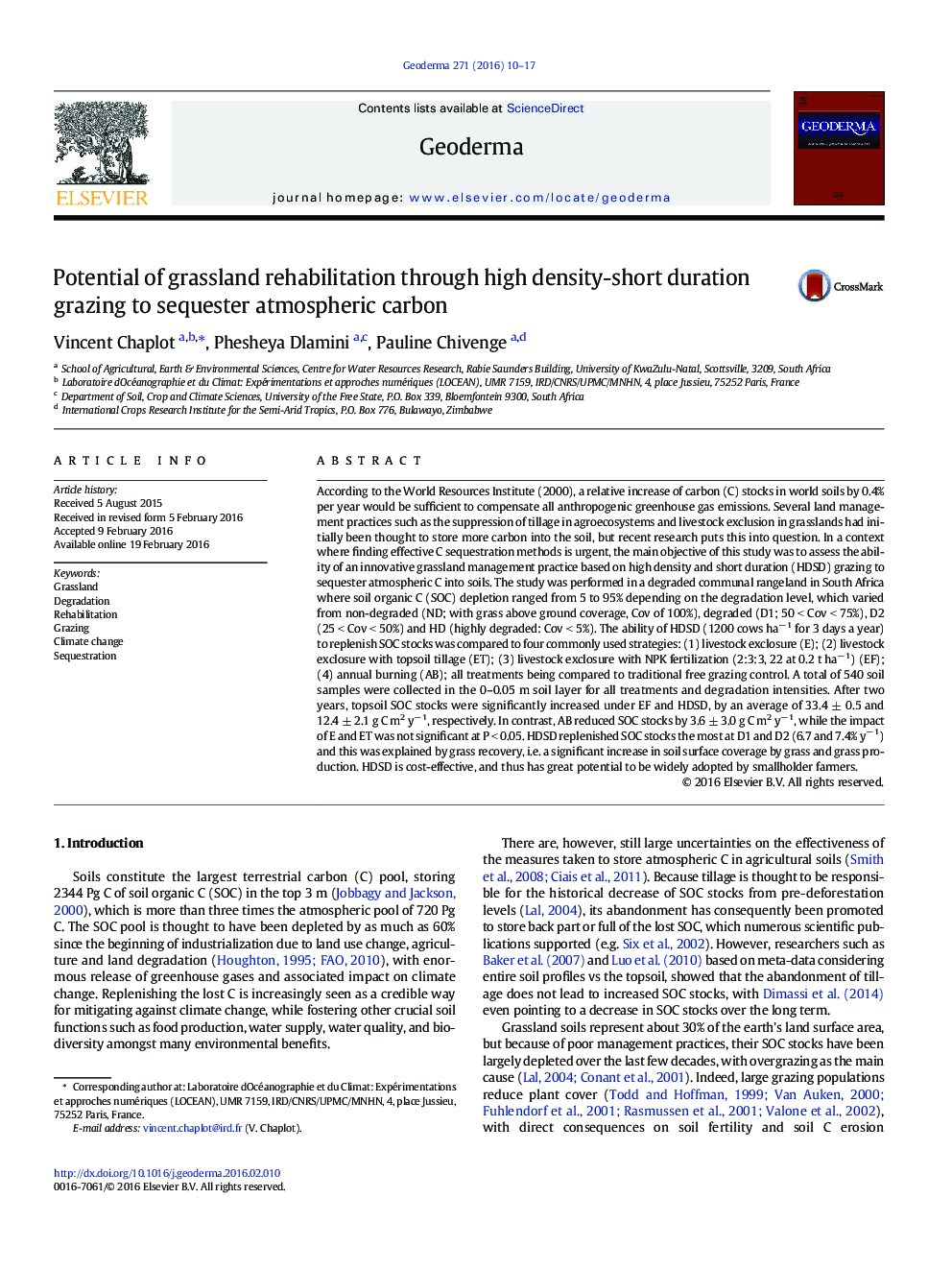| کد مقاله | کد نشریه | سال انتشار | مقاله انگلیسی | نسخه تمام متن |
|---|---|---|---|---|
| 4572966 | 1629446 | 2016 | 8 صفحه PDF | دانلود رایگان |
• We assessed the ability of high density and short duration (HDSD) grazing to sequester atmospheric C into soils;
• HDSD was compared to livestock exclosure; top-soil tillage and NPK fertilization;
• After two years, SOC stocks were significantly increased under fertilization and HDSD;
• HDSD replenished SOC stocks by as much as 7.4% y− 1.
According to the World Resources Institute (2000), a relative increase of carbon (C) stocks in world soils by 0.4% per year would be sufficient to compensate all anthropogenic greenhouse gas emissions. Several land management practices such as the suppression of tillage in agroecosystems and livestock exclusion in grasslands had initially been thought to store more carbon into the soil, but recent research puts this into question. In a context where finding effective C sequestration methods is urgent, the main objective of this study was to assess the ability of an innovative grassland management practice based on high density and short duration (HDSD) grazing to sequester atmospheric C into soils. The study was performed in a degraded communal rangeland in South Africa where soil organic C (SOC) depletion ranged from 5 to 95% depending on the degradation level, which varied from non-degraded (ND; with grass above ground coverage, Cov of 100%), degraded (D1; 50 < Cov < 75%), D2 (25 < Cov < 50%) and HD (highly degraded: Cov < 5%). The ability of HDSD (1200 cows ha− 1 for 3 days a year) to replenish SOC stocks was compared to four commonly used strategies: (1) livestock exclosure (E); (2) livestock exclosure with topsoil tillage (ET); (3) livestock exclosure with NPK fertilization (2:3:3, 22 at 0.2 t ha− 1) (EF); (4) annual burning (AB); all treatments being compared to traditional free grazing control. A total of 540 soil samples were collected in the 0–0.05 m soil layer for all treatments and degradation intensities. After two years, topsoil SOC stocks were significantly increased under EF and HDSD, by an average of 33.4 ± 0.5 and 12.4 ± 2.1 g C m2 y− 1, respectively. In contrast, AB reduced SOC stocks by 3.6 ± 3.0 g C m2 y− 1, while the impact of E and ET was not significant at P < 0.05. HDSD replenished SOC stocks the most at D1 and D2 (6.7 and 7.4% y− 1) and this was explained by grass recovery, i.e. a significant increase in soil surface coverage by grass and grass production. HDSD is cost-effective, and thus has great potential to be widely adopted by smallholder farmers.
Journal: Geoderma - Volume 271, 1 June 2016, Pages 10–17
